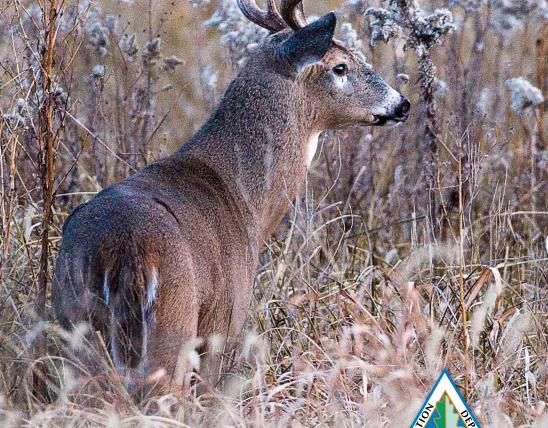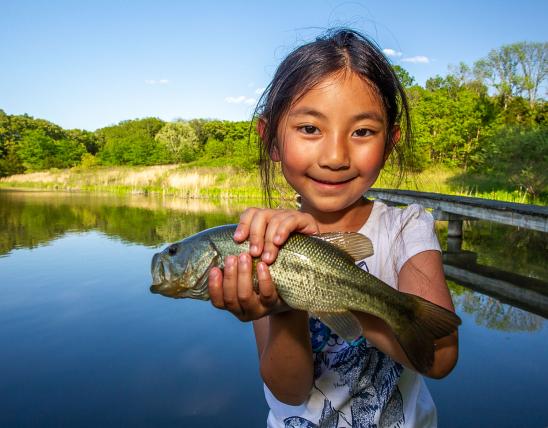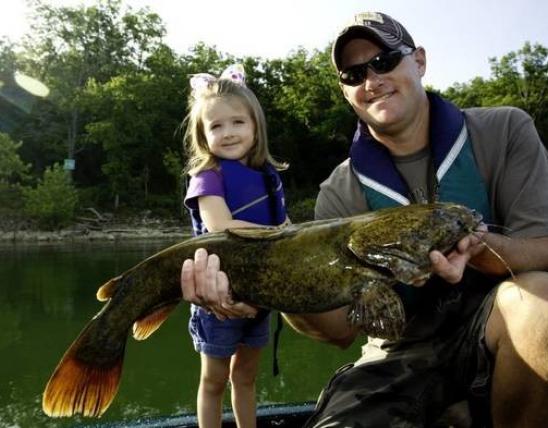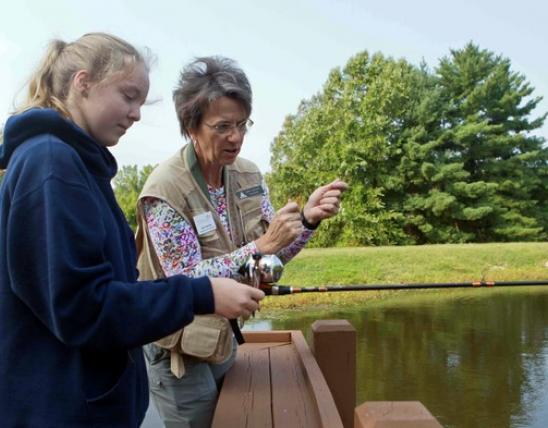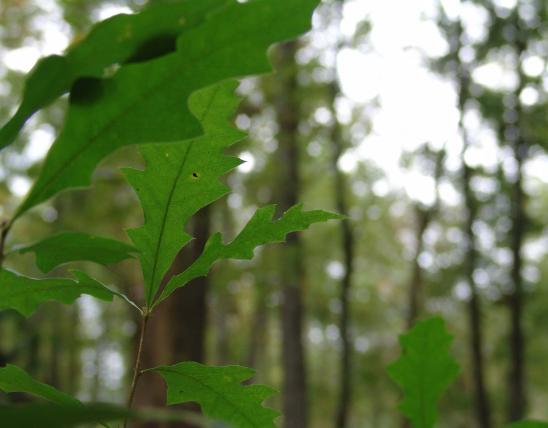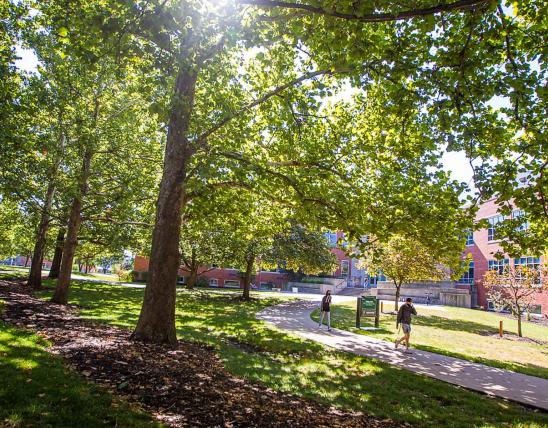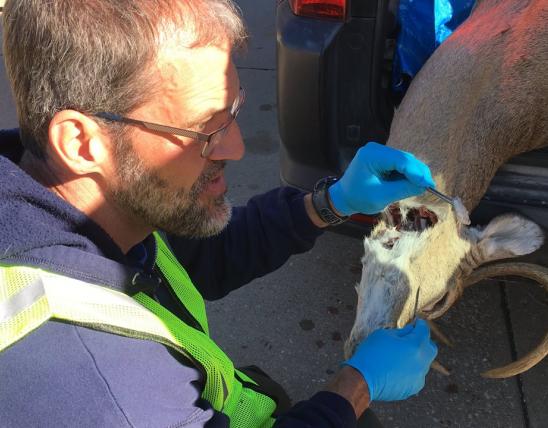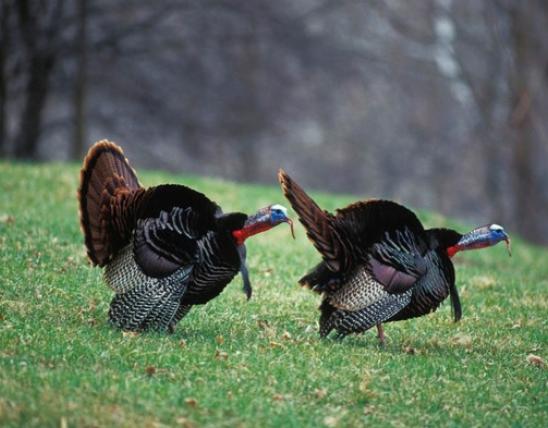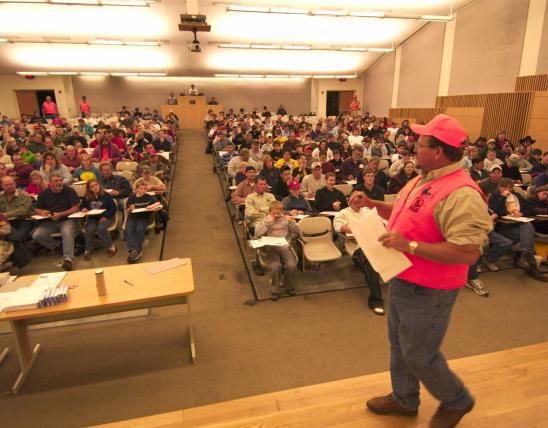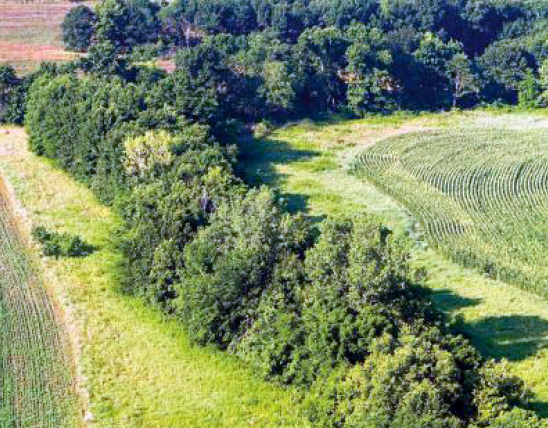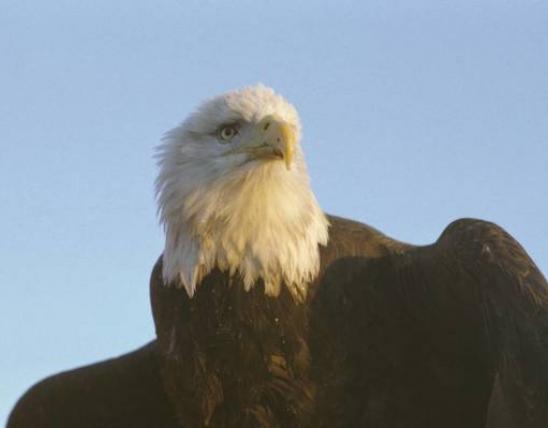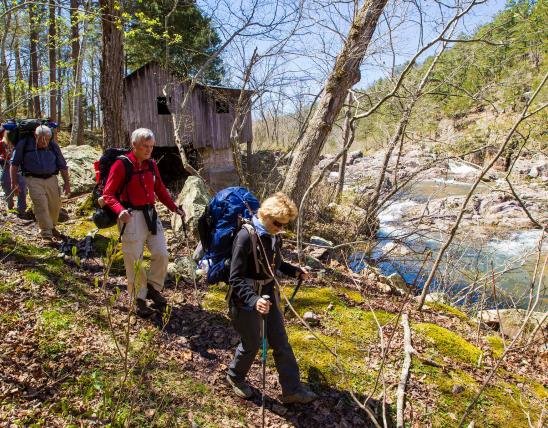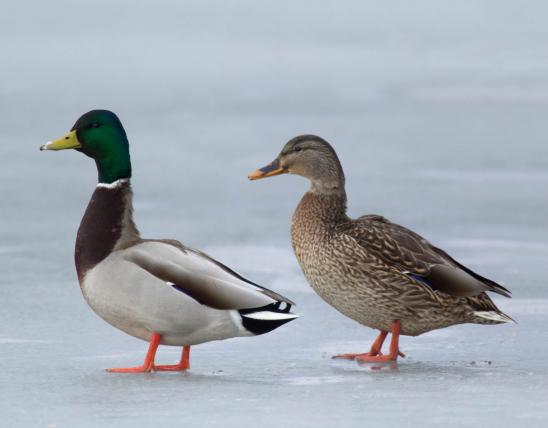
The canvasback adult male has a chestnut head, a notably long, sloping, blackish bill, a black chest and under tail coverts, and a white body. Female is light brown, with grayish back and sides. The voice of the female is a low growl; males hoot and squawk. Like other bay ducks (also called diving ducks or pochards), canvasback typically dive completely underwater. Compared to dabbling ducks, they have smaller wings relative to their body weight, resulting in longer takeoffs from the water surface. To take flight, bay ducks run along the surface of the water, patting their feet on the surface, as they gain speed and lift until they are airborne. The feet are located farther back on their bodies than on dabblers, making them sit upright when on land.
Similar species: The male redhead has a gray body (not white), and its bill is blue with a black tip. It has a rounder-looking head and is smaller overall.
Length: 21 inches (tip of bill to tip of tail).

Statewide. Most common along the Mississippi River.
Habitat and Conservation
Usually seen on lakes, rivers, and marshes. Compared to other diving ducks in this genus, it is more frequently found in deeper water. It is often observed in fall and winter in large “rafts” or groups on open water.
Food
Canvasbacks forage on the bottom for invertebrates and plants. Like other bay ducks, they can also forage by dabbling when necessary. The canvasback’s species name, Aythya valisineria, is from one if its favorite foods, Vallisneria americana, also called American eelgrass or wild celery, a grasslike plant that you may know from its common use in aquariums.
Status
Common migrant. Uncommon winter resident along the Mississippi River, rare elsewhere in the state.
Life Cycle
In Missouri, we usually see canvasback as they migrate in spring and fall. Their prime breeding habitat is in the “prairie pothole” (glacier-created) lakes ranging from Iowa to Alberta, but their breeding range extends to the interior of Alaska. Canvasback build floating nests among cattails and other emergent aquatic plants. They spend winters in southern and coastal United States and Mexico.
Human Connections
Duck hunting is a large industry in the United States. The canvasback was long considered one of the best-tasting species. Humans play a big role in conserving canvasback populations: We must protect their habitat, especially their breeding grounds.
Ecosystem Connections
Canvasback help control the populations of the plants and small aquatic animals they eat, and as eggs, young, and adults they are eaten by a variety of predators. Redhead ducks often lay their eggs in canvasback nests, to be raised by the unwitting foster parents.

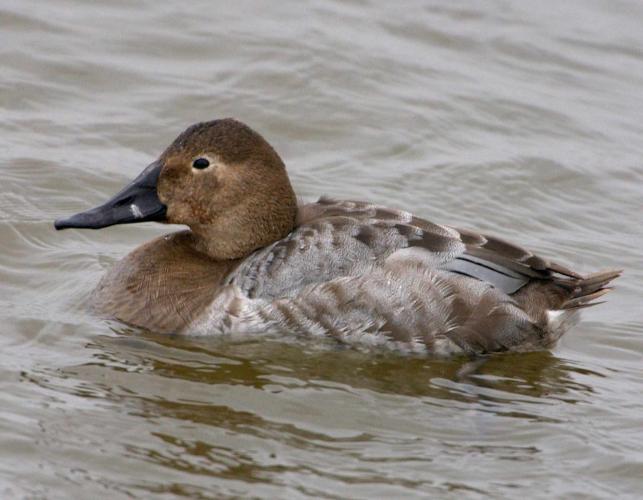



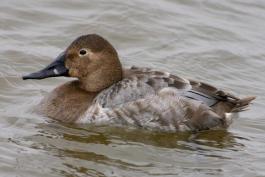


About 350 species of birds are likely to be seen in Missouri, though nearly 400 have been recorded within our borders. Most people know a bird when they see one — it has feathers, wings, and a bill. Birds are warm-blooded, and most species can fly. Many migrate hundreds or thousands of miles. Birds lay hard-shelled eggs (often in a nest), and the parents care for the young. Many communicate with songs and calls.

